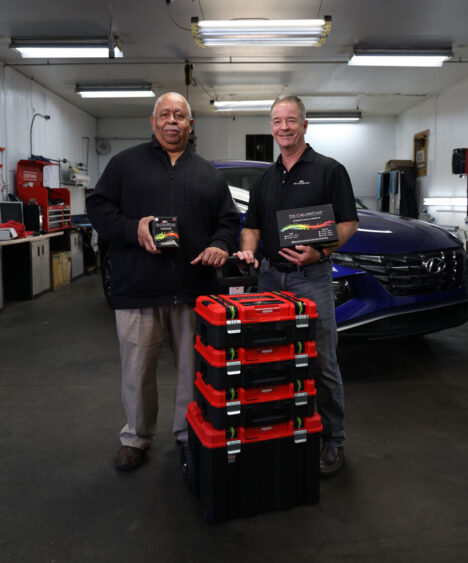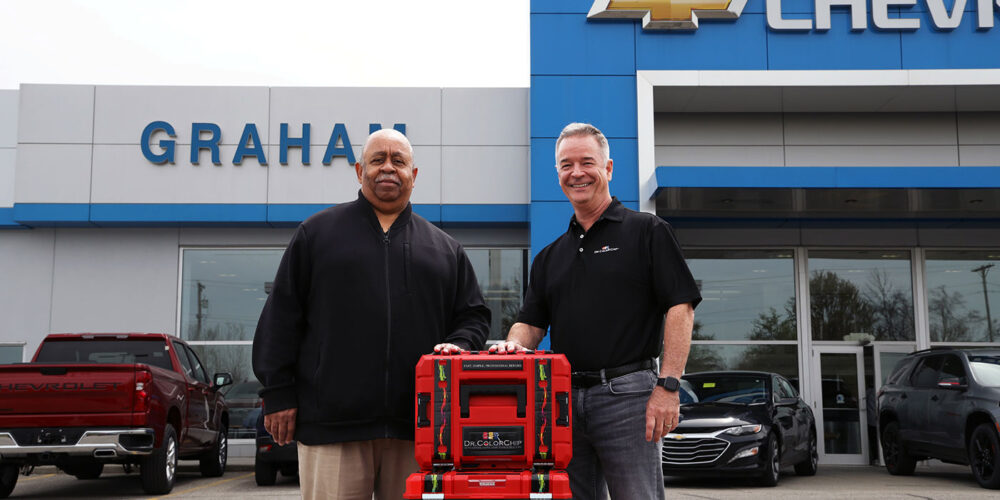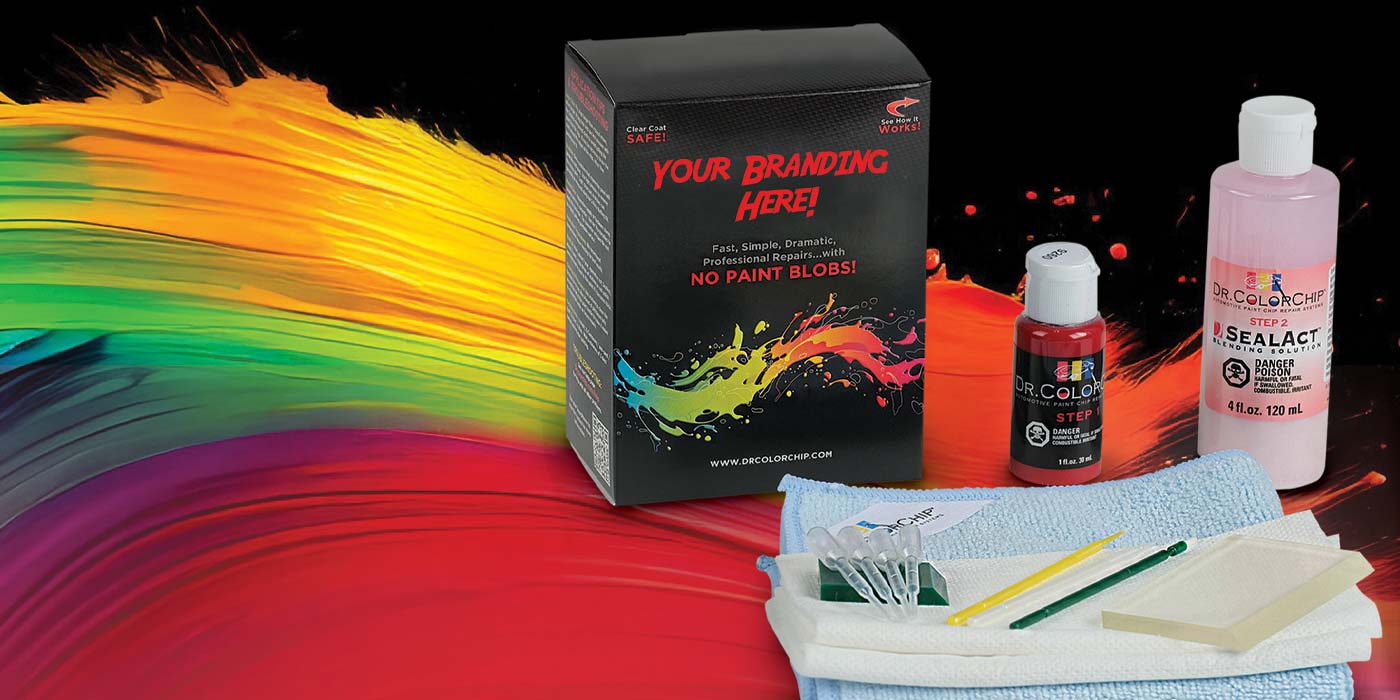Reconditioning vehicles is a daily activity at dealerships across the country. Most trade-ins need a little TLC in order to get them frontline ready. Paint chip repair is part of the reconditioning process but often a frustrating one, as dealers are beholden to the schedules of external contractors. Some dealerships have to wait days for their vendor to come to touch up their preowned vehicles. These are valuable days that could be used to sell these vehicles and as interest rates go up so do floorplan expenses. Dealerships need to be able to get their vehicles ready to retail as quickly as possible. Doing the touchup paint inhouse can help achieve this.
In addition, touch-up paint that is sold to customers by the parts department has always been a “touchy” subject for car dealerships. The paint pens that have been a fixture in dealerships for generations have never really done the job well for the customer or the dealership. Many customers have been left disappointed in the results on their vehicle. The pens often put out too much paint and leave bubbles of paint that look worse than the chips they are meant to cover. Many dealerships have been left disappointed in the customer’s disappointment.
Dealers know that customer retention relies on the customer having good experiences with parts and service. Customers that service with you are far more likely to return to buy their next vehicle from you, too. Today there are other options available to dealerships. In fact, these options can produce happier customers and increased profits.
To learn first-hand about how dealers are revolutionizing their paint chip repair process, we spoke with Gene Brooks, the facility and detail manager of Graham Auto Mall in Mansfield, Ohio.

Brooks’s passion for the automotive industry traces back to his childhood when he assisted his father in his two detail shops. That hands-on experience in detailing cars for local dealerships laid the foundation for his career.
Traditionally, dealerships rely on external companies to handle paint chip repair tasks. However, Brooks and his team saw the benefits of bringing the process in-house.
When seeking solutions for in-house paint repair, Brooks stumbled upon a brochure from Dr. ColorChip that caught his attention. Intrigued by the unique qualities of their paint, which included a thicker consistency for better chip filling, Brooks proposed implementing their products at the dealership. The decision to partner with Dr. ColorChip proved to be a game-changer.
Savings and Benefits
By transitioning to in-house paint repair, Graham Auto Mall experienced numerous benefits. Notably, the process became significantly faster, as vehicles no longer needed to wait for external contractors. Instead, once a car completed its service and detailing, it could proceed directly to the touch-up stage.
Additionally, Brooks emphasizes the cost-effectiveness of the new approach. By reducing the overhead expenses associated with external contractors, Graham Auto Mall saved considerable amounts of money.
“Outsourcing our touch-up painting was expensive and it slowed down our recon process too much,” Brooks says. “Now we have internalized the process and our cars are ready to put on the frontline days quicker and at an incredibly lower cost. Believe me, it’s around $2 per car now.”
Dan McCool, founder and president of Dr. ColorChip, knows how important inventory turn is to dealers, and waiting for an outside detailer can quickly lower a dealer’s margins. “When you have a lot of cars that need to be reconditioned, you’ll have to move those off the lot for four or five days. Well, you’re missing an opportunity for that car to be in front of a prospective buyer and selling it, turning it and getting onto the next used car.”
“Outsourcing our touch-up painting was expensive and it slowed down our recon process too much.”
— Gene Brooks, Graham Auto Mall
Implementation and Training
Training the Graham Auto Mall staff to perform the paint repair process in-house proved to be a smooth endeavor, Brooks says. “With experienced detailers already onboard, the transition was seamless.” He notes that Dr. ColorChip’s user-friendly products contributed to the ease of training, enabling anyone to achieve professional results. The simplicity of the process is evident from the fact that Dr. ColorChip sells their products to the general public as well.
The in-house paint repair process offers dealers an additional sales opportunity. By private-branding its product, Dr. ColorChip offers dealers and original equipment manufacturers (OEMs) a new way to reach their audience.
Dr. ColorChip offers DIY kits as an accessory to car dealerships. The company takes care of the headache of fulfilling orders and can ship directly to the customer, so dealers no longer need to maintain a lot of inventory, yet can offer a custom-branded product. Dealers can still carry a small amount of inventory of the most popular colors from their brands, but expired paint pen inventory will no longer be an issue.
“Dealers don’t have to touch it if they don’t want to,” McCool says. “They could carry the most popular colors that they have on the cars that they’re predominantly selling. They could carry a small amount of inventory in their service center. So, if a customer comes up and wants to order it and they happen to have it, they can capture the sale there. Or they can just go on to their computer and type it in, the order comes to us, and we can drop-ship direct to the customer. It’s quick and easy, and it drastically improves the dollars that are going to the dealer.”
McCool remarks that Tesla does a great job of marketing their touch-up paint systems to their drivers when they turn on their vehicles. Tesla drivers are regularly reminded that easy-to-use touchup paint is available. Dealerships can take a page from Tesla and do the same with their customers.
In the end, dealers and OEMs can now look at paint chip repair as an opportunity to keep in contact with customers and keep them happy.
“This can be an opportunity to make what really isn’t a money-producing part of your business into a very substantially lucrative part of your business,” McCool says. “Not only increasing the revenue that you can bring in but taking care of your customer and making them happy. They’re going to come back and buy another car from you. And that’s important. People sometimes fail to understand that personal communication doesn’t have to be on the internet and texting and emails. You can actually go and visit somebody, and you can take care of somebody and reach out to them. And the more you do that, the better chances are that you’re going to get a customer for life. And, you know, that’s what we shoot for.”














